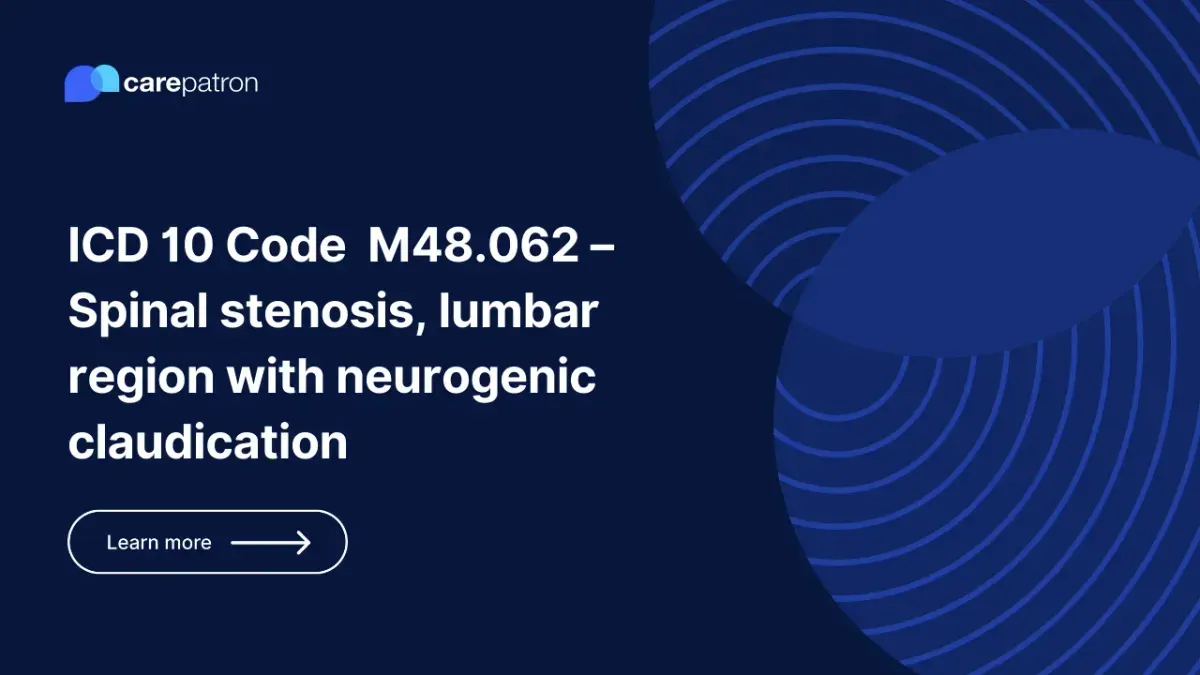
M48.062 – Spinal stenosis, lumbar region with neurogenic claudication
Learn about ICD-10-CM code M48.062 for lumbar spinal stenosis with neurogenic claudication, including symptoms, treatments, and coding specifics.
Use Code
EHR and practice management software
Get started for free
*No credit card required
Free
$0/usd
Unlimited clients
Telehealth
1GB of storage
Client portal text
Automated billing and online payments
